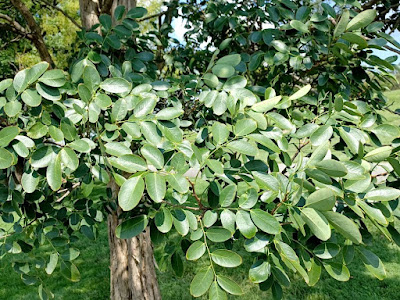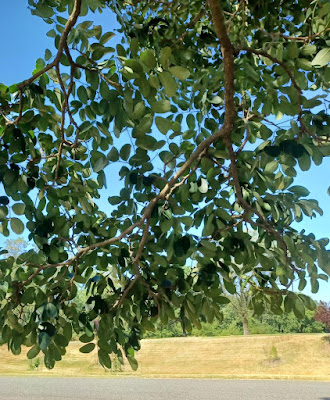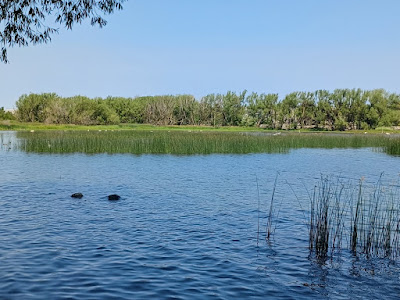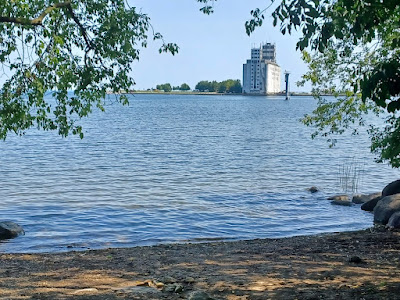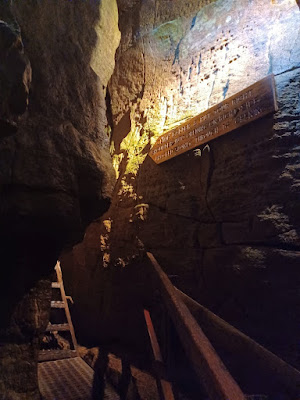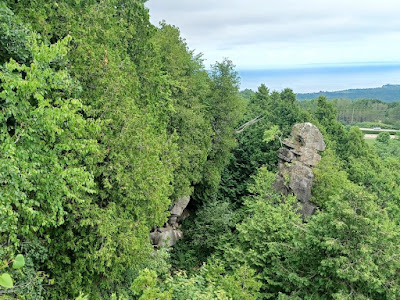Dalbergia
Dalbergia
A genus of close to 100 species of trees native to the tropics of all continents except for Australia. The foliage of most species looks like that of Robinia pseudoacacia - Black Locust. Many species are valuable for their timber which is excellent for cabinet making.
Propagation is from seed after soaking in water for 24 to 48 hours. They should be planted on their permanent site while small at the beginning of the rainy season.
Dalbergia greveana
A very large tree native to central Africa where it is endangered.
Some records include: largest on record - 180 feet with a trunk diameter of 4 feet.
Dalbergia hupeana ( Hupeh Dalbergia )
Also called Hardy Rosewood. A medium-sized tree, reaching up to 65 feet, that is native to wooded mountain slopes and streamsides in central and southern China. This beautiful tree is nearly unknown in cultivation in Europe and in North America.
The leaves up to 10 inches in length are composed of 7 to 11 leaflets. The oblong or elliptical leaflets are up to 2.5 x 1.6 inches in size. The leathery foliage is glossy deep green.
The white flowers up to 0.3 inches wide, are borne in panicles up to 8 x 8 inches in size, during late spring.
They are followed by thin pods up to 2.8 x 0.5 inches in size.
The very attractive bark is beige to bright brown and peeling. The strong wood is valuable for use in making tool handles.
Hardy zones 7 to 9. Seads should be soaked in hot water then left in the water to cool over 24 hours.
* photos taken on Aug 30 2021 @ U.S. National Arboretum, Washington, DC
* photos taken on July 3 2024 @ U.S. National Arboretum, Wash DC
Dalbergia latifolia ( Bombay Rosewood )
A large, evergreen to drought deciduous tree that is native to monsoon forests of India and Nepal. Some records include: 25 years - 67 feet with a trunk diameter of 1 foot; largest on record - 136 x 100 feet with a trunk diameter of 6.5 feet. It is becoming endangered in the wild due to exploitation of its valuable timber.
The pinnate leaves, up to 9 inches in length, are composed of 7 leaflets, up to 3 inches in length.
The white flowers are borne in clusters.
The gray bark is fibrous and peeling.
Hardy zones 10+. It is tolerant of clay and extreme heat to as much as 115 F.
Dalbergia melanoxylon ( African Blackwood )
Some records include: fastest recorded growth rate - 32 inches with a trunk diameter increase of 0.5 inches; 2 years - 5 feet; 3 years - 7.5 feet; 4 years - 10 feet; 8 years - 16 feet; largest on record - 100 feet.
The leaves, up to 9 inches in length, are composed of up to 9 leaflets.
Thrives in Yuma
Dalbergia nigra
Some records include: largest on record - 130 feet with a trunk diameter of 5 feet.
Hardy zones
Dalbergia oliveri ( Tamalan )
Also called Burmese Rosewood. A spreading, medium size evergreen tree native to Burma and Thailand.
Some records include: largest on record - 100 x 60 feet with a trunk diameter of 4 feet. It is becoming endangered in the wild due to exploitation of its valuable timber.
The fern-like pinnate leaves, up to 11 inches in length, are composed of up to 21 leaflets, up to an inch in length.
The flowers are borne in panicles. The lavender buds open to pink flowers that fade to white.
They are followed by narrow seed pods.
The bark is smooth and gray.
Hardy zones 11 to 12
Dalbergia retusa
A large tree native to Central America where it is endangered due to exploitation of its valuable timber. Some records include: largest on record - 100 feet with a trunk diameter of 4 feet.
The pinnate leaves are composed of leaflets, up to 5 x 1.5 inches.
Hardy zones 10+
Dalbergia sisso ( Indian Rosewood )
A very rapid growing large tree native to southern Iran and India. Some records include: 1 year - 16 feet; 5 years - 33 feet; 10 years - 50 feet; 12 years - trunk diameter of 8 inches; 30 years - trunk diameter of 1.5 feet; largest on record - 120 x 75 feet with a trunk diameter of 10 feet.
The leaves, up to 6 inches in length, are composed of 5 leathery, ovate to rounded leaflets, up to 3 inches in length.
The fragrant, pink to white flowers, up to 0.6 inches long, are borne on dense clusters, up to 4 inches in length, during spring.
Hardy zones 9b to 12 tolerating as low as 20 F. It requires a soil PH from 5 to 8 and an average yearly rainfall between 20 and 180 inches but can tolerate as low as 12 inches during an individual year. Does not enjoy clay. Propagation is from seed, softwood cuttings and hardwood cuttings.
* photo of unknown internet source
Dalbergia stevensonii ( Honduran Rosewood )
A large tree native to Belize where it is endangered.
Some records include: largest on record - 100 feet with a trunk diameter of 4 feet.
Hardy zones 10+

Welcome to Randy Stewart Landscape Design blog, specializing in Horticulture / Landscape Design with 20 years experience. I hope to help you transform your home into a sustainable flourishing garden paradise. Enjoy scrolling through the plant profiles and Model Home Design Albums on the right side index.
Wednesday, May 21, 2025
Monday, January 1, 2024
Japanese Honewort
Cryptotaenia japonica
A perennial, reaching up to 3.2 feet in height. It is native to forests in southern and eastern China, Korea, Japan and Tiawan.
The leaves are divided into obovate leaflets, up to 3.5 x 4 inches in size. The foliage is mid-green. The leaves and pods contain calcium and abundant vitamin C.
Hardy zoens 5 to 8 in sun or shade on just about any moist, well drained soil.
'Atropurpurea'
Reddish-purple foliage
* photo taken on June 19 2023 @ Hershey Gardens, Hershey, PA
A perennial, reaching up to 3.2 feet in height. It is native to forests in southern and eastern China, Korea, Japan and Tiawan.
The leaves are divided into obovate leaflets, up to 3.5 x 4 inches in size. The foliage is mid-green. The leaves and pods contain calcium and abundant vitamin C.
Hardy zoens 5 to 8 in sun or shade on just about any moist, well drained soil.
'Atropurpurea'
Reddish-purple foliage
* photo taken on June 19 2023 @ Hershey Gardens, Hershey, PA
Sunday, December 17, 2023
Alfalfa
Medicago sativa ( Alfalfa )
A perennial ( up to 20 years though usually less than half ) that is native to south-central Asia however is frequently planted as a cover crop and also naturalized in parts of central & eastern North America, western & central Europe. It can reach up to 3.3 feet in height though the roots often penetrate the soil at a depth from 7 to 10 feet and sometimes as much as 50 feet in dry climates on soil with groundwater beneath.
The leaves ( dried or fresh ) can be made into a mineral rich tea though not very strongly flavored and often mixed with mint. The seeds are eaten by many birds. The flowers support bees.
Alfalfa prefers somewhat neutral, deep, well drained soil and is drought tolerant. In Alberta; it can be grown as far north as Rainbow Lake and Fort McMurray. Propagation is easily done from seed soaked overnight and planted in moist soil. The roots contain nodules that contain bacteria that fix nitrogen. An acre of Alfalfa may fix up to 200 or more pounds of nitrogen in a year. Alfalfa is often planted as a cover crop to improved depleted soils or also as a green manure. Being a perennial, it may be allowed to grow for a few years while it improved the soil while also providing hay and nectar which is valuable in honey production. Alfalfa leaves, either dried or fresh, can be used as a garden fertilizer as they contain abundant nitrogen as well as a growth stimulant called Triacontanol.
A related plant called Medicago lupulina ( Black Medick ) is also commonly found in North America. It can be grown in all of Alberta except the extreme north.
* photo taken on July 9 2022 in Bayfield, ON
A perennial ( up to 20 years though usually less than half ) that is native to south-central Asia however is frequently planted as a cover crop and also naturalized in parts of central & eastern North America, western & central Europe. It can reach up to 3.3 feet in height though the roots often penetrate the soil at a depth from 7 to 10 feet and sometimes as much as 50 feet in dry climates on soil with groundwater beneath.
The leaves ( dried or fresh ) can be made into a mineral rich tea though not very strongly flavored and often mixed with mint. The seeds are eaten by many birds. The flowers support bees.
Alfalfa prefers somewhat neutral, deep, well drained soil and is drought tolerant. In Alberta; it can be grown as far north as Rainbow Lake and Fort McMurray. Propagation is easily done from seed soaked overnight and planted in moist soil. The roots contain nodules that contain bacteria that fix nitrogen. An acre of Alfalfa may fix up to 200 or more pounds of nitrogen in a year. Alfalfa is often planted as a cover crop to improved depleted soils or also as a green manure. Being a perennial, it may be allowed to grow for a few years while it improved the soil while also providing hay and nectar which is valuable in honey production. Alfalfa leaves, either dried or fresh, can be used as a garden fertilizer as they contain abundant nitrogen as well as a growth stimulant called Triacontanol.
A related plant called Medicago lupulina ( Black Medick ) is also commonly found in North America. It can be grown in all of Alberta except the extreme north.
* photo taken on July 9 2022 in Bayfield, ON
Saturday, July 15, 2023
Travels - Grey County and Collingwood
COLLINGWOOD
* photos taken on June 8 2023
CRAIGLEITH
* photos taken on June 8 2023
Meaford
* photos taken on July 9 2023
SCENIC CAVES NATURE ADVENTURES ( NEAR COLLINGWOOD )
* photos taken on June 10 2023
Thornbury
* photos taken on July 8 2023
* photos taken on July 9 2023
* historic archive photo
GREY COUNTY
Desboro
* photos taken on July 8 2023
Feversham
* photos taken on July 10 2023
Mount Forest ( just to the immediate south of Grey County in Wellington Co. )
* photos taken on July 10 2023
Ravenna
* photos taken on July 10 2023
Walters Falls
* photos taken on July 8 2023
* photos taken on June 8 2023
CRAIGLEITH
* photos taken on June 8 2023
Meaford
* photos taken on July 9 2023
SCENIC CAVES NATURE ADVENTURES ( NEAR COLLINGWOOD )
* photos taken on June 10 2023
Thornbury
* photos taken on July 8 2023
* photos taken on July 9 2023
* historic archive photo
GREY COUNTY
Desboro
* photos taken on July 8 2023
Feversham
* photos taken on July 10 2023
Mount Forest ( just to the immediate south of Grey County in Wellington Co. )
* photos taken on July 10 2023
Ravenna
* photos taken on July 10 2023
Walters Falls
* photos taken on July 8 2023
Labels:
ON,
Travels - Grey County
Subscribe to:
Posts (Atom)




